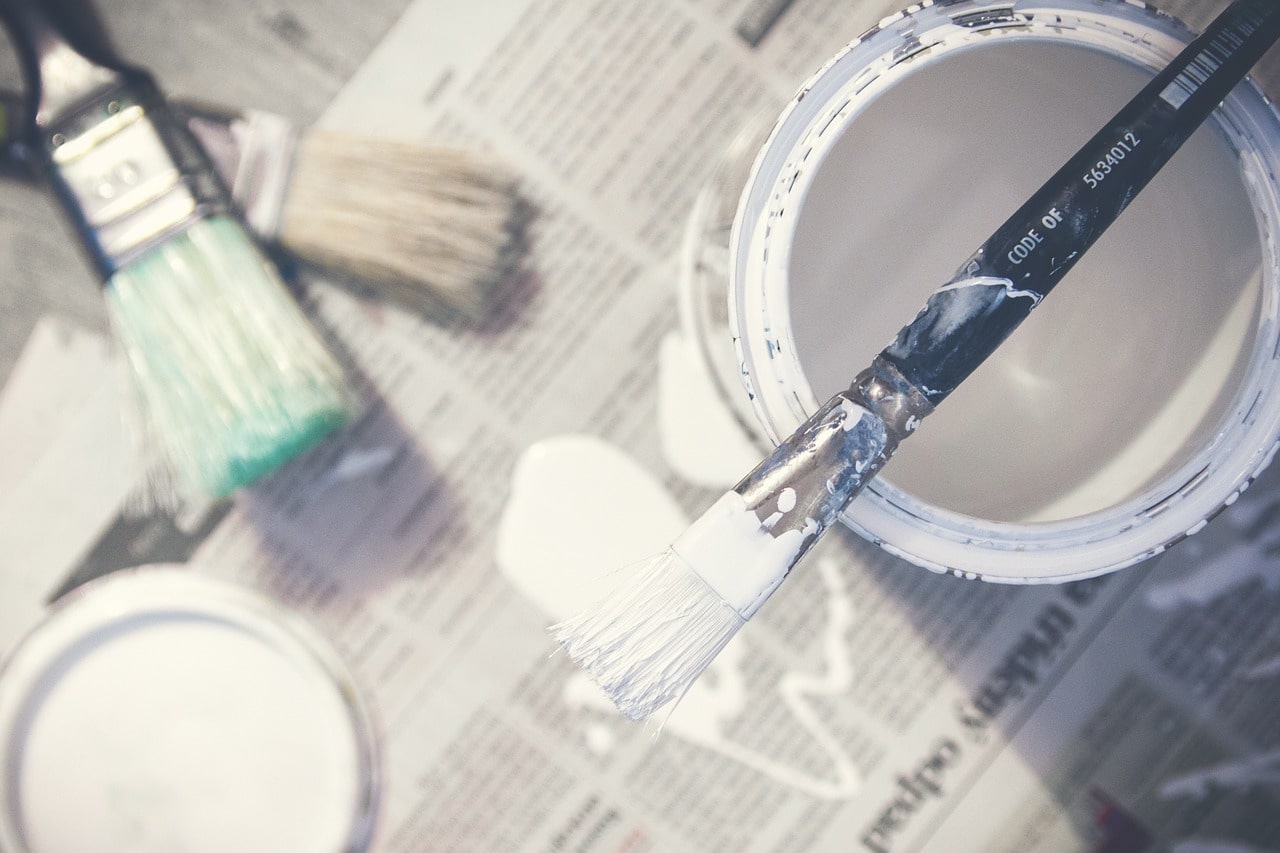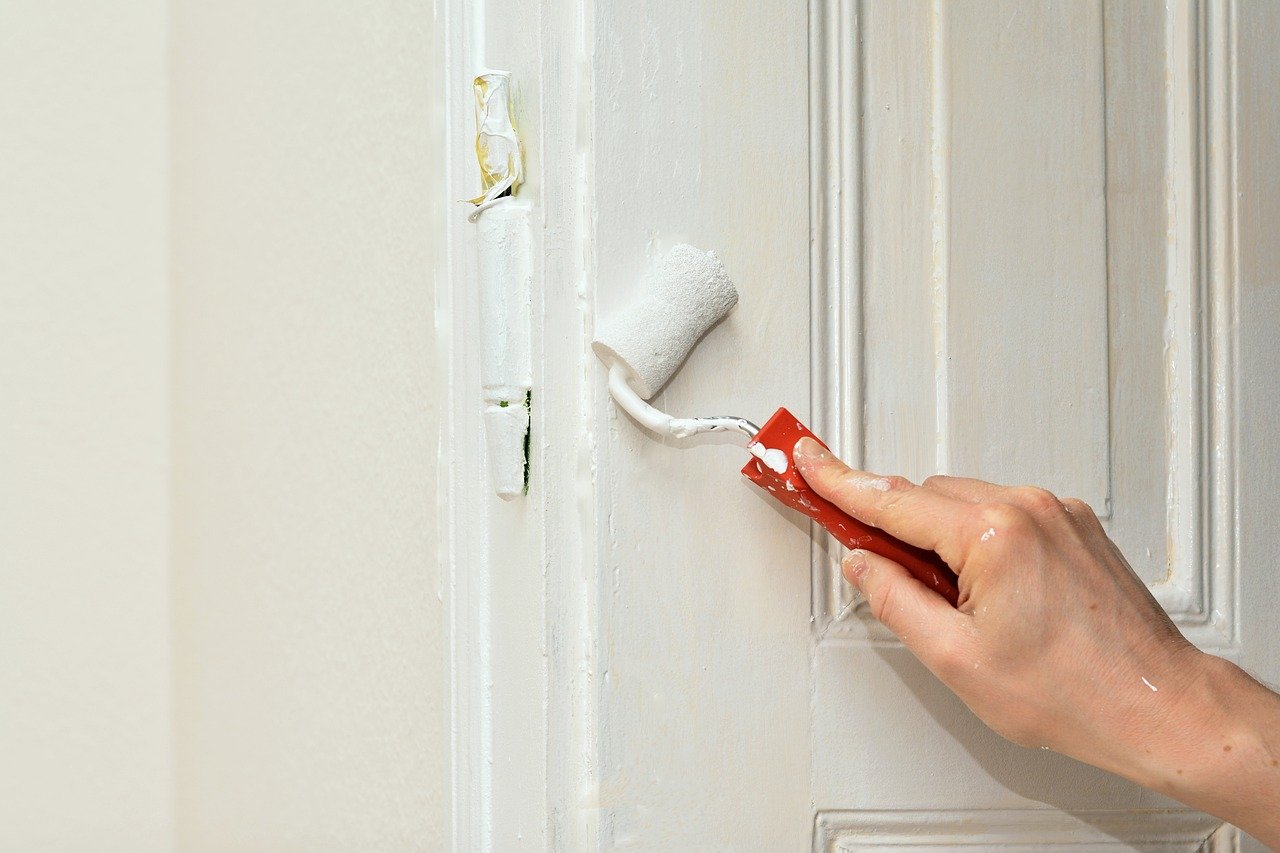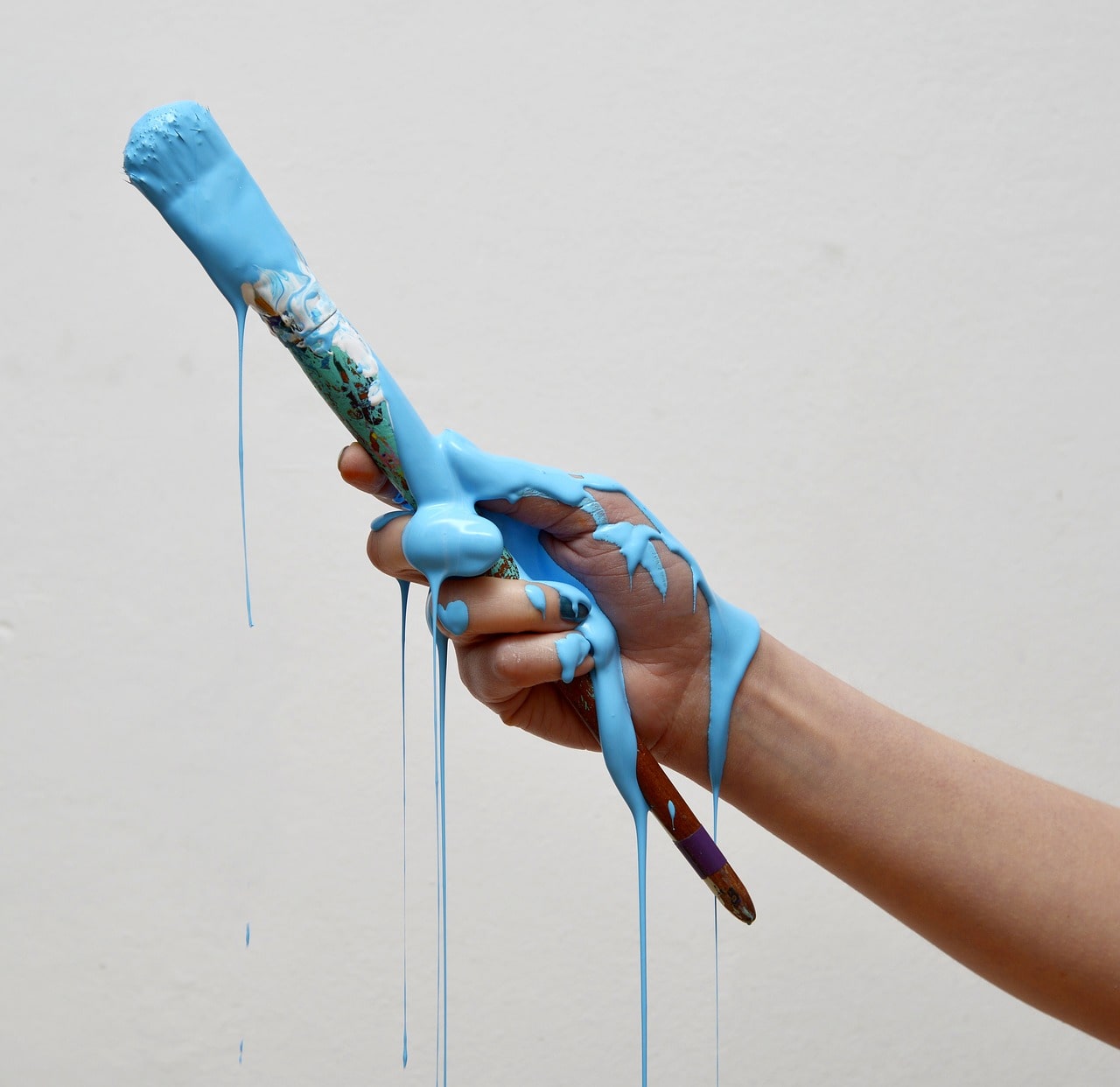
Internal doors take a lot of wear and tear – on a day to day basis they contend with muddy pets, sticky fingers and plenty of people passing through the house. However durable your doors are, this heavy use means it is inevitable that they will start to look a little battered around the edges.
A fresh coat of paint is an easy way to spruce up tatty doors. It is also a great way to personalise new doors to match your own unique interior or style. But to help them withstand all that wear and tear, you need to make sure you get the right paint, the right technique, to protect your doors and prolong their life.
This quick guide will give you all the information you need to get a perfect finish when you paint your doors. From picking the right paint to prepping your doors for perfection, follow this advice to get your internal doors looking their best.

When it comes to painting interior doors, your chances of success can be decided before you even lever the lid off the paint can. Whether you're starting with a brand new door or covering up a previously painted door surface, the steps you take before you start to paint a door can make a huge difference.
Here are some things you should consider before you start painting so that you can make sure you get a sleek finish.
When it comes to painting doors, picking the correct door paint is obviously important. These are high-use items in your home, and they need to be protected and preserved to keep them working well.
A gloss or satinwood (semi-gloss) paint is best. These paints provide a strong waterproof seal for your door that stops moisture from getting into the wood. They also create a robust finish that can withstand the frequent cleaning needed to keep an interior door looking its best.
Try to avoid oil-based paint where you can, particularly if you're using white paint. Oil-based paint will yellow over time making it look stained, dirty and tatty. Especially when it's sitting in direct sunlight. Two coats of modern water-based satin and gloss paints should be durable enough to last years without fading or yellowing.
This depends on the type of interior door you are painting. If you're painting a flat/flush door, it is usually best to use a roller to paint with. This lessens the chance of brush marks appearing and should leave you with a smooth finish. Going over the freshly painted surfaces with a wide brush will even out the paint and remove the 'foamy' texture a roller sometimes creates.
When painting panel doors using a roller can be more difficult. A small roller will work on larger areas but could cause paint to pool in between wood mouldings or raised decoration. A brush used in steady stroke will still give an even coat of paint across large areas, and the bristles will contour to the door's surface.
At the end of the day, it's less about what you use to apply paint and more about taking your time to do the job properly not using too much paint at once.

If you are adding a fresh coat to an old door, it is possible to apply the new paint without taking down the door first. It can even be easier to leave it on its hinges, as you can paint both sides at once and then leave the door open to dry. Just prepare the door properly, and be careful not to catch yourself on the wet edge of the door.
If you are painting a door for the first time, then it is always advised you paint the door before you hang it on its hinges. With a new door is important you create a completely waterproof seal before the door is hung to stop any moisture from absorbing into the wood. This is easiest to do with the door laid flat, as you can see it from all angles and are less likely to miss a spot.
If you're painting solid wood or hollow core doors you shouldn't need a primer. Just make sure to sand the surface to give the paint something to hold on to and that should be enough.
However, if you're painting a laminate door you will definitely need a good primer. You will probably still need to lightly sand as well to ensure an even smoother finish.
Another instance where you might need a primer is if you are covering over oil-based paint. You can check this by using a cloth dampened with rubbing alcohol. If the paint rubs onto the cloth, then you shouldn't need a primer. If it stays put, then you'll need to prime the surface before applying a coat of water or latex-based paint - even if it's the same color.
It is usually a good idea to gently sand the door before you start. This will roughen the surface to make it easier for the paint to cling to.
If you're covering an old coat of paint, it is best to try and remove as much of the paint as possible. Use medium-grain sandpaper or even a power sander - just take care not to damage the door.
This is also a good time to check the surface of your interior doors for cracks, chips or marks. If there is any damage, fill it with a little wood filler, then smooth it out with another light sanding.
If you follow all of our advice above, you'll already be well on your way to a perfect paint finish for your door. These little preparations will edge your paint job from 'okay' to 'stunning'.
These extra steps might feel time-consuming, but they will be worth it in the end.

Start by preparing the area you will be working in. Hoover the floor as well as dusting and wiping down surfaces to make sure there is no dirt in the air that could stick to the wet paint.
You'll also need to protect any nearby surfaces from splashes. Cover them with dust cloths, old sheets or even newspapers. Don't forget to cover the floor either.
You'll need to prepare the door surface. Read through our advice above to decide whether this means you need to prime, lightly sand or strip your door before you start with a fresh coat of door paint.
However you prepare your door, you need to make sure you've got a clean, smooth surface. Even a brand new door will need going over with a tack cloth to make sure every last bit of grit and dust is gone.
If you have removed your door to paint it, take your screwdriver and remove the door hardware and hinges. If you are leaving it hung while you paint, you should still remove the door handles, and use painter's tape to mask off the hinges.
You should always start painting a door with the edges. Use smooth, steady strokes to cover each edge. If you're using a brush, keep a pair of tweezers nearby and make sure to remove any errant bristles that get stuck in the paint.
The best way to actually paint the door will depend on whether you're tackling a paneled door or a flat door.
With a flat door, you can use a wide brush or roller to apply your first coat of paint. Paint in smooth, vertical motions and make sure to remove any excess paint from the brush/roller. If you try to apply paint too thickly this will lead to drips, bubbles and marks.
Painting paneled doors is a little more difficult than flush doors. Start by painting the vertical strips that frame the panels of the door (the stiles) then covering the panels themselves.
Tip: For a door with many intricate panels, you can add a paint conditioner to your paint. This will keep the paint wet for longer, giving you a little more time to even things out across all the panels.
Leave the first coat to dry for around 4-6 hours. Trying to apply a second coat over wet paint will just smudge and stain it.
Apply a second coat following the same steps as the first, depending on whether it is a paneled door or flush.
Once you've finished painting your interior door, you can clean up the sheets or newspaper and reattach the handle.
Once you've painted, open the doors and windows for as long as you can to air out the house. Leave the paint to dry for at least 24 hours before touching it. Once completely dry you can reattach your door hardware and fit your internal doors.
